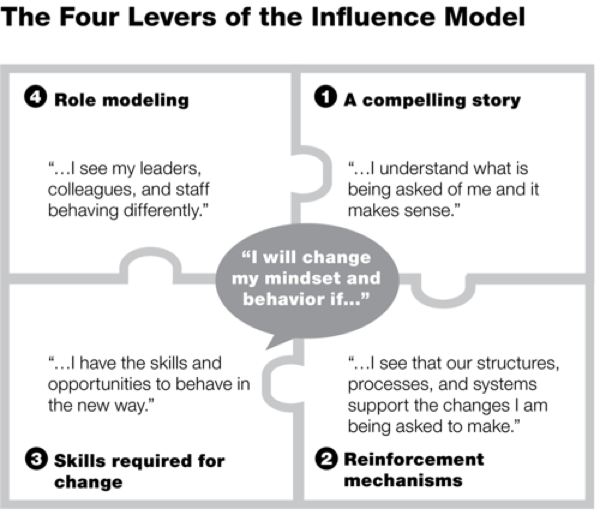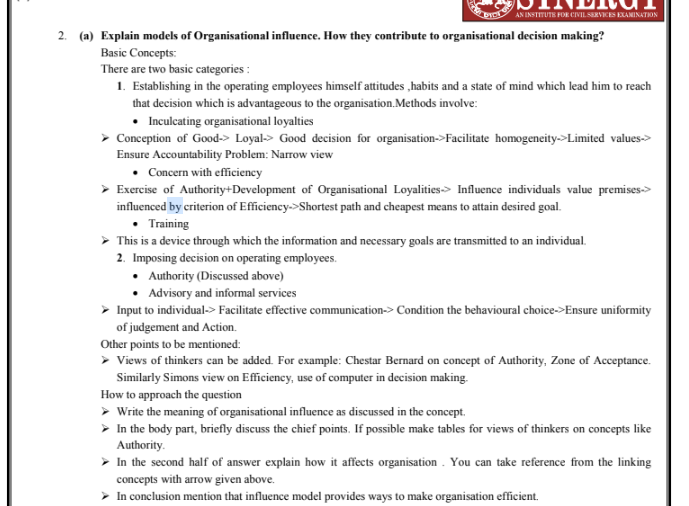- This is the third in a series of posts adapted from Scott Keller & Colin Price's new book,Beyond Performance: How Great Organizations Build Ultimate Competitive Advantage. The first post described two counter-intuitive insights about creating lasting change in organizations -- that common sense can sometimes lead you astray, and that the "soft" stuff can be managed as rigorously as the "hard" stuff in organizations.
- The second post discussed ways to use social media and viral marketing within organizations to sustain change programs.
- You know your organization needs to change. You've developed a strategic view about where you need to go and you've matched that up with an understanding of the changes that will require in your culture.
- You've thought very hard about organizational mindsets and personal behaviors that will need to shift to get there. Now, you actually have to do something to shift them.
- Getting anyone to change is hard. Getting a whole organization to change can seem nearly impossible.
- Yet that's exactly what most organizations need to do to continue to thrive.
- Over a few decades of working with all kinds of organizations--businesses, government agencies, NGOs--we've developed a process to encourage people to change that works. Not all the time, but far more often than not.
- In more than a decade of research and far more client work, what we've seen is that the starkest differentiation between organizations that can change successfully (and sustain higher performance over time) and all the others isn't in what they say, it's in what they do--how they actually implement change.
- You can't just have a workshop and put up a few posters, you have to intervene in the system.
We think about it this way: if you want to change someone's behavior just imagine you're in the middle of this square. There are four things that need to happen, and they need to happen in relative symmetry.

Most people have been behaving however they behave for a long time.
At work, very often those ingrained behaviors are reinforced by the organization's culture and by how its leaders behave.
1.What is asked from Employees-
So, the first step, top right hand side, people need to understand what you want them to do differently. And they need to get that at least enough to be willing to experiment. That can take anywhere between two days and a year. It's not just sending out a memo and assuming it's done. It's a process of deeply engaging with people, talking with them, listening to them, framing the changes in a context that's meaningful to them
2.Reinforcement Mechanisms
Next, bottom right, if people understand the strategy and understand the desired culture, but look around and see the systems and processes of the organization reinforcing yesterday rather than tomorrow, they think all that dialog isn't serious. If we're supposed to act with speed and urgency but the budget process takes three months, people will think, "Oh well, why bother? It's just not real." Now, there are thousands of processes in any large organization, so you can't change them all. But you can choose the five or ten that will have most leverage on the outcome and change those very early on.
3.Skills Required for Change
Bottom left is about capabilities. People may want to change, and see processes changing around them, but they personally also have to have the skills to behave differently. Maybe that's different technical skills, maybe it's different leadership skills. For the organization, that gets you into placement, replacement, and development. Placement is moving people around, replacement is moving people out in the appropriate way, and development is helping people in place gain new skills.
4.Role Modelling-
And then top left. Psychologists would tell us that this is as important as the other three added together, and it's that people need to see significant others, usually the senior people, role modeling new behaviors, following new processes, building new capabilities. If we're supposed to be more open to the external world, for example, is the CEO out there visiting customers?
***************************************************************************
***************************************************************************
Each of the four levers in our influence model affects mindsets in a particular way. An individual transformation program may rely on some levers more than others, but using all four together sets in motion a powerful system that maximizes a company's chances of getting new patterns of thought and behavior to stick.
To illustrate how the levers work together, imagine that you go to the opera on Saturday and a football game on Sunday. At the climax of the opera, you sit silent and rapt in concentration. At the climax of the football game, you leap to your feet, yelling and waving and jumping up and down. You haven't changed, but your context has (the influence model that surrounds you)--and so has your mindset about the behavior that's appropriate for expressing your appreciation and enjoyment.
To continue with the analogy, organizations that are unhealthy are often caught between an opera house and a football stadium--not a comfortable place to be. Asking employees for a football-stadium mindset is no use if your evaluation systems and leadership actions communicate that your organization is still an opera house. If you want your people to think like football fans, you need to provide plenty of cues to remind them they are in a stadium.
To illustrate how the levers work together, imagine that you go to the opera on Saturday and a football game on Sunday. At the climax of the opera, you sit silent and rapt in concentration. At the climax of the football game, you leap to your feet, yelling and waving and jumping up and down. You haven't changed, but your context has (the influence model that surrounds you)--and so has your mindset about the behavior that's appropriate for expressing your appreciation and enjoyment.
To continue with the analogy, organizations that are unhealthy are often caught between an opera house and a football stadium--not a comfortable place to be. Asking employees for a football-stadium mindset is no use if your evaluation systems and leadership actions communicate that your organization is still an opera house. If you want your people to think like football fans, you need to provide plenty of cues to remind them they are in a stadium.





No comments:
Post a Comment
Note: Only a member of this blog may post a comment.